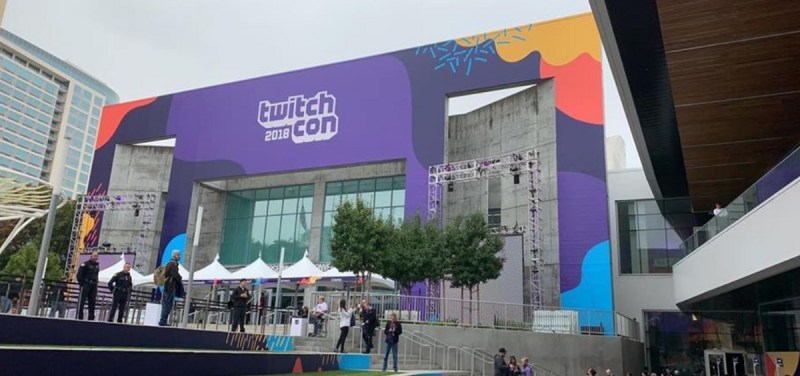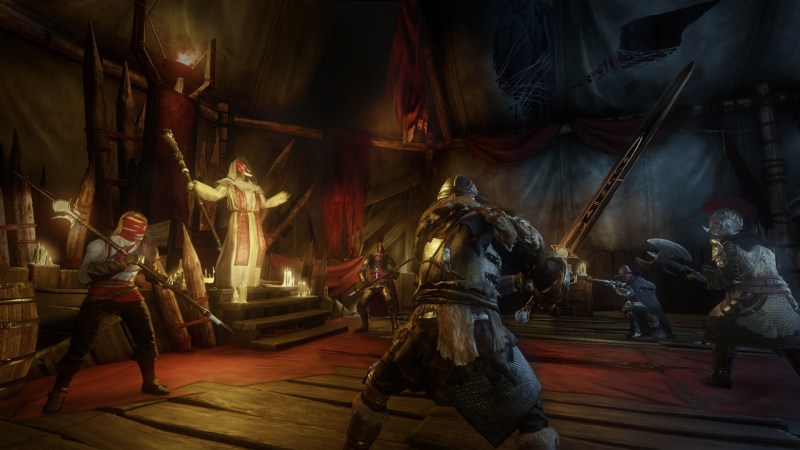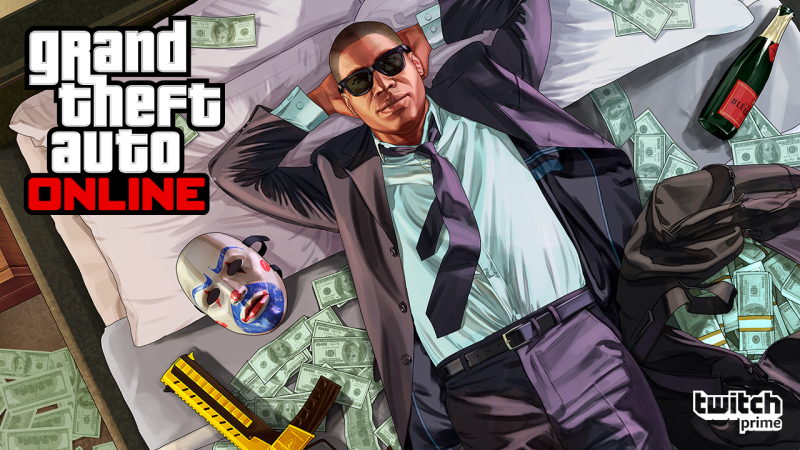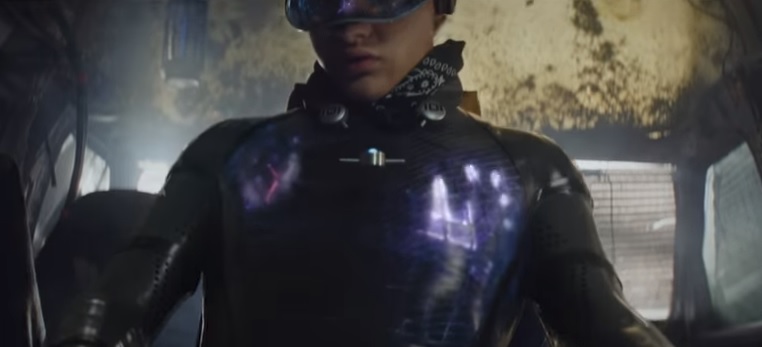Mike Frazzini is one of Amazon’s most-experienced homegrown game executives, as he has been at the company for 16 years and has worked on games at Amazon since 2009. Now vice president of games, Frazzini is one of the top people who figures out how one of the world’s biggest tech companies will participate in the industry.
Frazzini spoke about Amazon’s approach to making games at our recent GamesBeat Summit 2020 event. Many know that Amazon offers cloud services and other tools for game developers through its app store, Amazon Web Services infrastructure, and the Lumberyard game engine. For years, such services and mobile games were all Amazon did in games. But now the company is making its own games, and it’s doing it the Amazon way.
“Whenever we approach a new business or industry, the first thing we do is wonder who the customer is,” Frazzini said. “You ask, ‘What is their current situation, what are they struggling with, what are their needs, how might we surprise and delight them with something that we can build?'”
In other words, it’s both a data-focused and human-focused approach, where the voices of gamers and streamers and their audiences count as much as the creativity of the developers themselves.
June 5th: The AI Audit in NYC
Join us next week in NYC to engage with top executive leaders, delving into strategies for auditing AI models to ensure fairness, optimal performance, and ethical compliance across diverse organizations. Secure your attendance for this exclusive invite-only event.
Frazzini added, “In games, from the get go, we thought about game developers as customers and players as customers. The first thing you do is go out and meet as many of them as you can. When I showed up, we already had a video games business with Amazon Web Services. Game developers were using it.”
Buying Twitch

Above: TwitchCon 2019 drew thousands of people to San Jose, California.
Things got more focused in 2014, when Amazon acquired Twitch for $970 million. This showed people that Amazon was serious about getting into games, and then Amazon drew up a list of dream candidates to hire for its game business. Now, the wisdom of that acquisition is clear, as Twitch is growing rapidly, even before the pandemic had people look to game livestreaming as a form of entertainment.
Amazon recruited folks such as Louis Castle, John Smedley, Rich Hilleman, Christoph Hartmann, and many others to run various projects and studios. The company has game studios in Seattle, San Diego, Orange County in Southern California, and San Francisco. It also works with other developers around the world.
The gaming leaders that Amazon hired knew how to make games, but at Amazon, the approach started with “working backwards documents,” or describing the experience the player should have, based on the feedback collected. Frazzini said that Amazon even shows those documents to players to see if it sounds right to them. Once that feels solid, the teams start designing a game and writing the software to make it all work. Some things change along the way. And some ideas don’t make it, like Breakaway, an esports game that was shelved in 2018 after a couple of years of development.
“Making games was something entirely new for us, and in part we apply some of the same methods that we use in a lot of Amazon,” he said. “You hire great people — the best in the industry — and then you give them the freedom to create and invent. It’s not taking the playbook of Amazon and applying it to games. It’s taking the playbook of Amazon, applying the parts that make the most sense, and then learning and adapting it for making content.”
As an example, the retail business focuses on fast shipping. You can measure that and improve on it. With games, you try to create an engaging experience. The metric for fun isn’t simple. So there’s more exploration. That’s a big part of the exercise, and Frazzini said it is an “incredible learning experience” and games is a “fascinating category.”
“Making content is an important next step for us,” Frazzini said.
Launching games
The games that are close to the finish line are the massively multiplayer online fantasy title New World, which has a supernatural take on colonial times; and Crucible, a science fiction survival adventure. Crucible is launching on May 20, and New World is set for August.
Both games focus on live content, where the developers keep adding content over time.
“From day one, the moment we release, we hope it delights a lot of people and they play it for a long time,” Frazzini said.
I asked if Amazon is considered making mobile games that it could launch every six months. Frazzini said the mission of “surprise and delight” and “invent on behalf of customers” led the company to focus on frontiers. One of these was Twitch, or game livestreaming, and Amazon will “bias” toward games that work well on Twitch, Frazzini said.
“Those games are typically the multiyear games,” Frazzini said. “We look at it as a frontier. It’s unknown, but there are enough signals to have confidence there is something interesting here. There’s going to be a lot of experimentation. You will get some things right and some things wrong. You iterate and experiment on this frontier fervently. You come up with ideas and notice things that you can double down on.”
Working during the pandemic

Above: The Corrupted in New World
Asked about the impact of the coronavirus on the Amazon Game Studios, Frazzini said safety was foremost. The teams figured out they didn’t all have the right equipment at home, and Amazon had to get it to them. He noted that making games is an iterative process in which people give feedback by looking over the shoulders of someone creating something. Teams can’t do that anymore.
“That slowed things down, and it’s definitely created a challenge for the teams,” Frazzini said. “There’s definitely a (productivity) hit we’ve taken.”
But the notion of “Play Apart Together” is inspiring, as games are bringing people together during the pandemic, he said.
“People are turning to games as both a form of entertainment and a way to stay connected,” Frazzini added. “There is some inspiration that comes from that. Of course, not worth the cost. These are scary, troubling times.”
But the developers are motivated to get their work out so that players can enjoy them, even if they are in lockdown. Frazzini said that he believes that more people will wind up playing games, as family members get a better idea of how attractive games are while being cooped up without other things to do. And for Twitch, that means both gaming and non-gaming content are likely to take off.
Starting Twitch Prime

Above: GTA Online gets some bonus content on Twitch Prime.
Twitch Prime started some years ago after Amazon CEO Jeff Bezos asked whether there should be an Amazon gaming rewards program. The team designed Twitch Prime over many months, and the idea was to make it the “best deal in games,” to be a no-brainer for people who love games. This is a companion to Amazon Prime, a collection of benefits like faster shipping and Prime Video.
The Twitch Prime idea started with giving away a credit to subscribe to a favorite livestreamer. It also included bonus content that developers create to hold gamer interest. In the past year, Amazon gave away $7,000 worth of content to Twitch Prime subscribers.
“The whole idea is how we provide benefit to gamers in these live games,” Frazzini said.
One of the things that Bezos has encouraged game developers such as Smedley to do is “computationally ridiculous” games, like where you have to invent new technology to make the most ambitious games.
“These are meant to be sources of inspiration, or painting a picture of a frontier without specifying the solution or the outcome,” Frazzini said. “We have built a lot of technology that will enable player experiences that will be exhibited in our upcoming games that are pretty interesting. I don’t know if they will meet that bar for everybody. Ultimately, players get to decide.”
Both Crucible and New World will exhibit these innovations, like lots of players trying to take over a fort in New World, or an endlessly persistent world. Amazon taps its servers in the cloud to enable vast computing power to be used in user’s games.
Ready for the metaverse?

Above: A haptic suit enables Wade to feel touch in the Ready Player One trailer.
I asked what a big platform company like Amazon might do in the space that everyone is calling “the metaverse,” or the universe of virtual worlds as envisioned in novels like Snow Crash or the film Ready Player One.
“This gets in the world of imagination,” Frazzini said. “I don’t have anything in particular here that we are doing that I would comment on. I don’t think we have any idea of what the Metaverse will be. I think there was a picture of what it could be painted in Ready Player One and Snow Crash. But I don’t know if it will be that. I don’t know if it will have VR or not. Or if it will be one company or multiple companies. In general, it’s an interesting ambition. I enjoy reading about what other people say on it.”
Instead, Frazzini said his focus is on getting its games out, and help developers sell more content, and help streamers reach more audiences and make more money.
“We’re just getting to the starting line,” he said.

